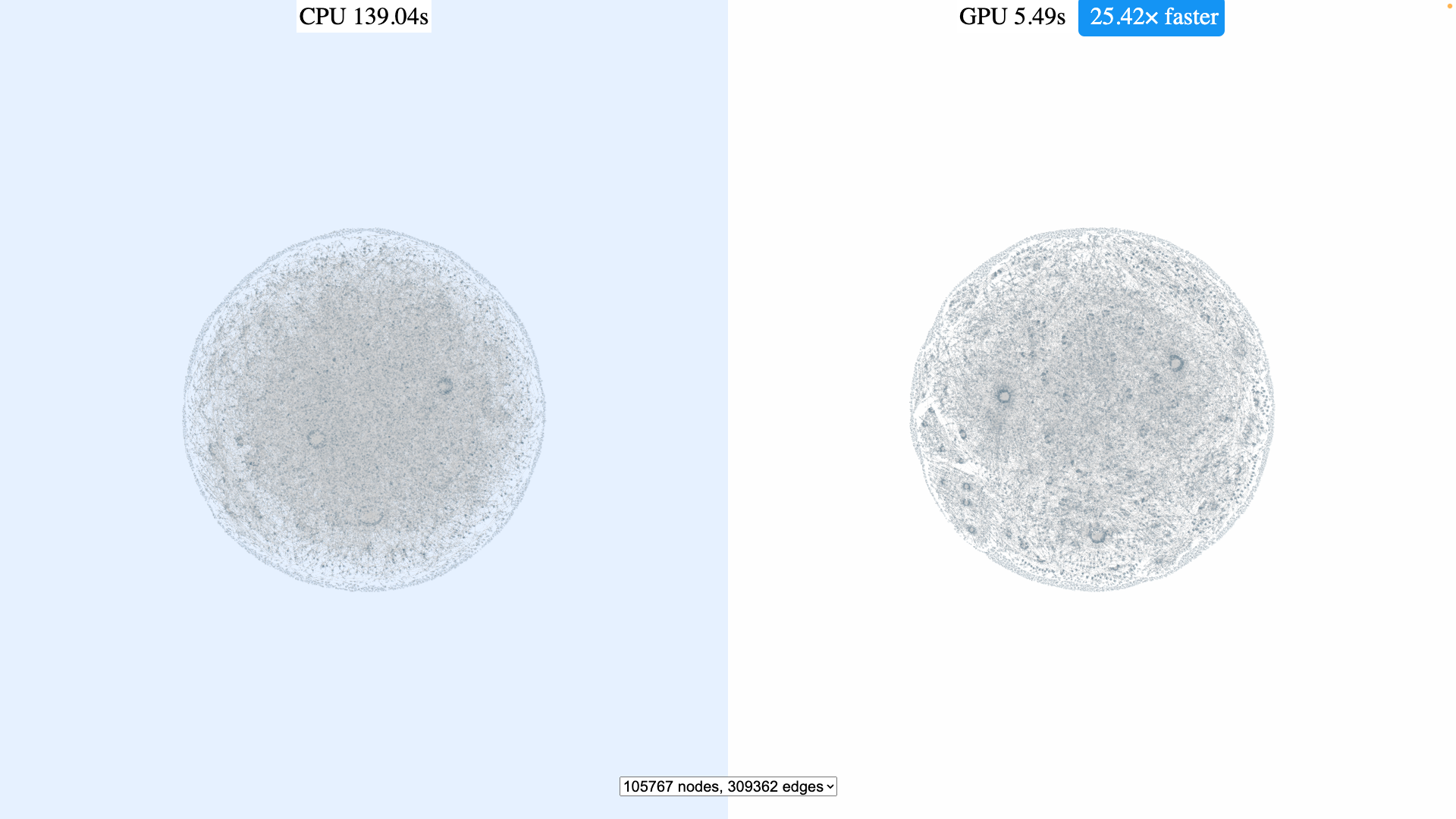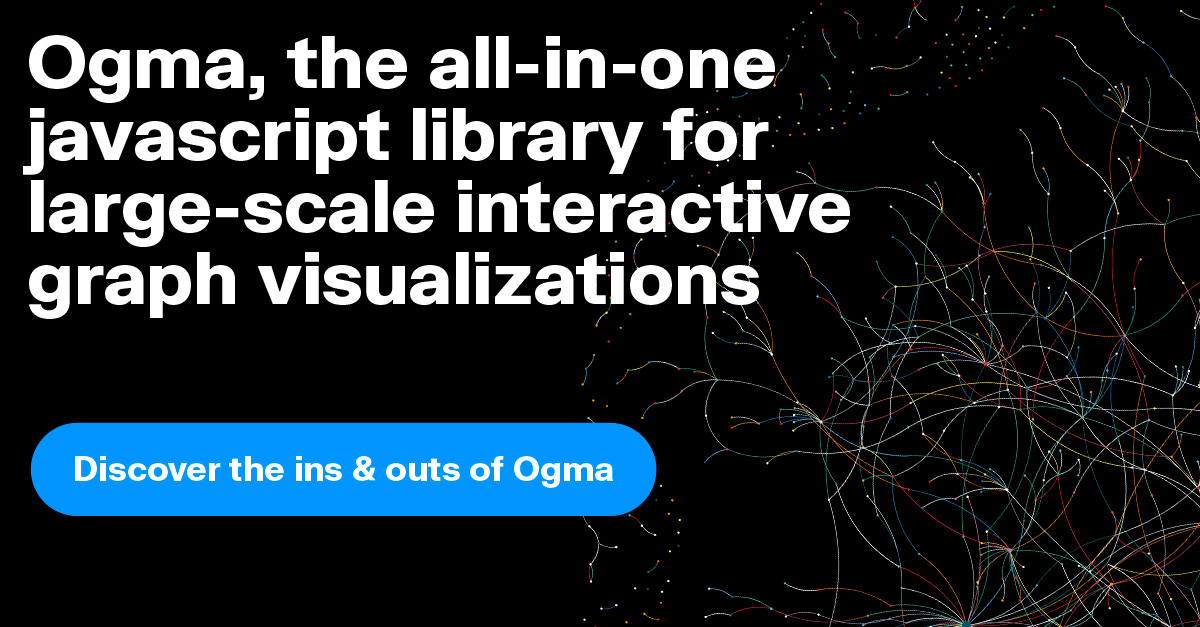If you’re choosing to use an open source JS graph library for your application, one thing is certain: the sticker price is unbeatable. In our experience, though, open source graph libraries can come with certain risks and drawbacks worth considering when deciding which library to use.
Full disclosure: Linkurious has its own JavaScript graph library, Ogma - which is not open source. Still, depending on the scale and scope of the project, and the bottom line of your budget, we believe an open source library could be a good fit.
If you’re on the fence, though, there are a few factors to take into account as you decide whether an open source graph library or a commercial one makes sense for your project. Read on to understand the practical implications of using a commercial versus an open source JavaScript graph library.
An open source library typically doesn’t have a consistent, paid team behind it. While open source libraries may come with cool features, this dynamic fundamentally hampers innovation. Without a full time team behind it, new and interesting features tend to roll out more slowly. New features and APIs can also be driven by the ideas of one person, who may have little or no contact with customers and the market more generally. Meaning you may not get the features you want or need.
A commercial JS graph library like Ogma, on the other hand, comes with a full suite of features available out of the box. A dedicated team continues to make improvements and roll out new features based on customer feedback and a keen eye on market trends and needs. Take the recent example of Ogma’s GPU layout, which offers unparalleled speed and precision, handling in seconds what previously took minutes to compute. This development has opened new possibilities for the exploration of bigger datasets.

Some open source JS graph libraries are maintained relatively well. Others not so much. But the problem with an open source library is that its maintenance isn’t guaranteed - or not in the way you need. Many open source libraries actually belong to or originate from big companies who pay for these libraries to be maintained full time. But the priorities are set by these companies, meaning other users may have no input on how the libraries are maintained.
With a commercial solution, the maintenance is included in the contract you sign, giving you a guarantee of stability beyond what any free library can offer.
The support you’ll get when using an open source library is usually limited to community resources. Crowdsourcing answers can certainly be a powerful resource. But tracking down the information you need and applying it to your own project is often time consuming, costing hours of developer time. Sometimes you’ll need a fast answer about a business critical question, and in this case an open source library can represent a real risk since they can’t always guarantee timely answers.
A commercial library has dedicated support, which means getting the exact answers you need quickly. These libraries also come with many examples - which are maintained and updated - providing a big leg up as you get started. They help make sure you don’t have to reinvent the wheel.
For complex applications or large scale graphs, you’re better off with a real powerhouse of a graph library. In these cases, a commercial library is your friend - you’re far less likely to run into blocking performance issues.
If you’re working on a more basic application or smaller graphs, however, you might simply not need all that power. In these cases an open source graph library might meet your needs.
When you see the price difference between an open source library versus a commercial one, the cost difference seems like a no-brainer. But it’s important to consider the total cost of ownership. The price of a commercial library includes guaranteed maintenance and support, up to date resources for developers, etc.
With an open source library, you don’t have these guarantees, and that comes with a cost, often in the form of developer time. It might take a team of developers several months to get their application up and running using an open source library, versus only weeks with a commercial one. Even if the library is free, the developer hours aren’t.
Considering the above differences between commercial and open source graph libraries, commercial libraries have certain key advantages over their open source counterparts:
- Future-proof. Using a commercial library limits the risk of encountering problems that go unresolved or discontinued maintenance.
- Time savings. Dedicated support and a wide variety of examples means developers can get up and running quickly without having to spend hours of work time figuring everything out on their own.
- A high-quality product. The teams behind commercial libraries are constantly innovating and improving their product in line with users’ needs.
The bottom line is that, in most cases, a commercial library is a better guarantee of a good experience for your users and/or client, greater adaptability to evolving needs and more predictable costs for you over time.
This is a particularly critical consideration to keep in mind for organizations developing commercial applications themselves. “We could not do what we do today without this kind of technology,” says Olivier Bonsignour, Head of Product at CAST, “and what we can achieve with Ogma in terms of display and aesthetics of the solution is important to our overall success.” Still not convinced? Just read some of our customer stories: CAST and Cisco.
A spotlight on graph technology directly in your inbox.

